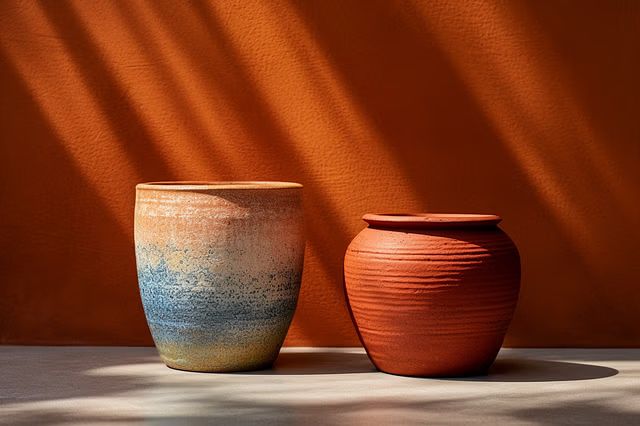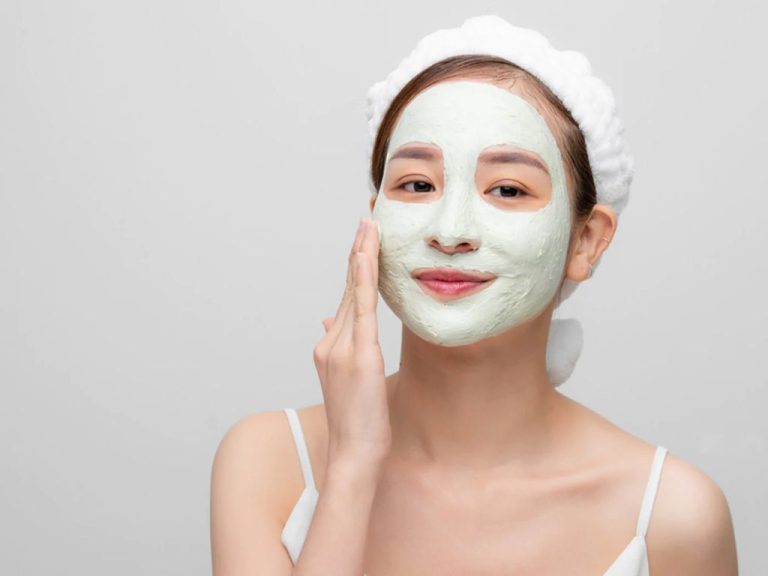Is Porcelain Good For Baking?
Porcelain is a ceramic material made by heating raw materials including clay and minerals like kaolin to extremely high temperatures. The result is a hard, white, translucent material known for its durability and heat resistance. Porcelain has been used for centuries to create dishes, art objects, and decorative items.
When it comes to baking, porcelain offers some unique properties that make it a popular choice for bakeware. Porcelain’s smooth non-porous surface makes it ideal for baking delicate pastries like cakes that need gentle release from the pan. Porcelain’s high heat resistance allows it to withstand very high oven temperatures. Quality porcelain bakeware can produce evenly browned baked goods and crisp crusts.
In this article, we’ll explore the pros and cons of baking with porcelain, how it compares to other bakeware materials, best practices for use and care, top recipes suited for porcelain, and expert tips for getting the most out of porcelain bakeware.
Pros of Baking with Porcelain
One of the biggest pros of baking with porcelain is its ability to distribute heat evenly throughout the bakeware. According to Caesarstone, high-quality porcelain can withstand extremely high temperatures ranging from 1,200°F to 2,000°F. This allows porcelain bakeware to heat up and cool down gradually without cracking or breaking. The even heating allows recipes to bake consistently throughout the pan without hot or cold spots.
Porcelain’s smooth non-porous surface also makes it very easy to clean after baking. Food and grease wipe off easily without staining or absorbing into the bakeware. You can confidently use porcelain for baking projects involving dough, cheese, fruit fillings, or other ingredients that can stick and leave residue behind on other materials.
Cons of Baking with Porcelain
One of the main downsides of baking with porcelain is that it can be prone to chipping, especially if handled roughly. Porcelain has a smooth, glass-like surface that can crack or break off in small pieces quite easily compared to materials like metal or stoneware.
When cutting or slicing baked goods in a porcelain dish, using sharp utensils can cause chips along the rim or sides. Porcelain is also sensitive to rapid temperature changes, so removing hot pans quickly from the oven and placing them on a countertop may lead to thermal shock and chipping.
To avoid chipping, it’s recommended to handle porcelain gently, allowing pans to cool completely before cleaning or storage. Using soft, flexible utensils is also advised. According to this source, porcelain tiles can chip easily when cutting, so similar care should be taken with porcelain bakeware.
Overall, the delicate nature of porcelain means small chips and cracks may eventually occur with regular use. So while beautiful for baking, porcelain requires extra precaution compared to metal or glass pans.
Porcelain vs Other Bakeware Materials
When it comes to bakeware, there are a few common materials to choose from – metal, glass, stoneware, and porcelain. Each material has its own advantages and disadvantages for baking.
Compared to metal bakeware, porcelain heats more evenly and gently. Metal conducts heat quickly, which can lead to hot spots and uneven baking. Porcelain’s smooth glazed surface also makes food release easier compared to some metal pans. However, metal pans are often thinner and more lightweight than porcelain dishes.
Porcelain has a similar baking performance to glass and stoneware. Like porcelain, glass and stoneware heat evenly without hot spots. All three materials are non-reactive, so they won’t impact flavors. One difference is that porcelain tends to withstand higher temperatures better than glass. Porcelain and stoneware also typically have higher thermal mass to retain heat better than glass. However, glass allows you to visibly monitor baking progress.
When it comes to appearance, porcelain often has a classic, attractive look that pairs well with serving. The durability and chip-resistant nature of porcelain also lends itself well as a long-lasting bakeware investment. While personal preference dictates material choices, porcelain is often regarded as a high quality, reliable option for baking needs.
Best Practices for Baking with Porcelain
When baking with porcelain, following best practices will help ensure your baked goods turn out perfectly without damaging the bakeware. Here are some tips for getting the best results:
Preheat your oven fully before baking. Porcelain needs proper preheating to prevent cracking or breaking from sudden temperature changes. Allow at least 15-20 minutes for your oven to reach the baking temperature. According to Made In’s guide, porcelain bakeware can safely withstand temperatures up to 572°F.
Allow porcelain bakeware to cool down slowly after baking. Don’t transfer a hot porcelain dish straight from the oven to a cold surface. Let it cool down gradually to prevent damaging temperature shocks. Leave the dish in the oven or on a rack to cool for at least 15-20 minutes before handling.
Use parchment paper or grease the pan if needed. For items prone to sticking, line porcelain pans with parchment paper or use butter, oil, or non-stick cooking spray to grease them first. This prevents baked goods from becoming fused to the porcelain.
Avoid sudden temperature changes. Don’t put a hot porcelain dish straight into the refrigerator or freezer. Let it cool to room temperature first. Similarly, don’t add cold batter or dough straight into a hot porcelain pan.
Be gentle when handling to prevent chipping or cracking. Porcelain is durable, but the baked clay material can still chip if subjected to hard knocks, drops, or scratches from metal utensils.
Ideal Baking Temperatures for Porcelain
When baking with porcelain, it’s important to pay attention to the maximum recommended temperatures to avoid cracking or breaking your bakeware. According to Made In Cookware (https://madeincookware.com/blogs/can-porcelain-go-in-the-oven), porcelain ovenware is generally safe for temperatures up to 500-572°F (260-300°C). However, always check the specifications of your specific porcelain pieces, as the maximum temp can vary.
Porcelain made in Italy, France and Germany is often rated for higher temperatures up to 650°F. The researchers at The Pottery Wheel (https://thepotterywheel.com/is-porcelain-oven-safe/) confirm that most quality porcelain bakeware can withstand temperatures between 500-650°F (260-345°C). If you’re unsure of the heat tolerance of your porcelain, it’s best to keep temperatures under 500°F to be safe.
In summary, quality porcelain bakeware can handle most baking, roasting, and broiling tasks called for in recipes. But pay close attention to the manufacturer’s recommended temperature range for your specific pieces to avoid damage over time. When in doubt, lower oven temperatures slightly to protect your investment in porcelain bakeware.
Cleaning and Caring for Porcelain Bakeware
Porcelain bakeware requires some special care to keep it looking its best and functioning optimally. Here are some tips for cleaning and maintaining your porcelain pans and dishes:
Porcelain should always be handwashed, never put in the dishwasher. The harsh detergents and high heat of the dishwasher can damage the finish over time. To handwash, use warm soapy water and a soft cloth or sponge. Avoid abrasive scouring pads or powders that can scratch the surface.
To remove baked-on food, fill the dish with warm water and let it soak for 10-20 minutes to loosen debris. You can also try sprinkling some baking soda directly on stuck-on spots and scrub gently with a non-abrasive sponge, according to Made In. For tougher stains, Barkeeper’s Friend cleaner can help lift discoloration without scratching, as noted on Reddit.
Be gentle with porcelain to prevent chips and cracks. Avoid dropping it or banging it on hard surfaces. Store carefully stacked or nested with towels between pans.
With proper care, your porcelain bakeware can maintain its beauty and function for many years of baking. Handwashing and gentle scrubbing are key to keeping it looking like new.
Top Recipes for Baking with Porcelain
Porcelain bakeware is ideal for baking a variety of delicious recipes including cakes, cookies, pies, and more. Here are some top recipes to try with your porcelain baking dishes:
For cakes, porcelain provides even heating and helps cakes bake up tall with a tender, moist crumb. Excellent cake recipes for porcelain include Lemon Yogurt Pound Cake, Marble Cake, and Classic Chocolate Cake.
Cookies also bake up nicely in porcelain bakeware. Recipes like classic chocolate chip cookies, Slab Sugar Cookies, and peanut butter cookies spread evenly and bake consistently without burning on the bottom.
For pies and tarts, porcelain’s excellent heat conduction produces crisp, flaky crusts every time. Great options include Slab Fruit Pies, quiche in a tart pan, and classic apple or pumpkin pie in a pie dish.
Porcelain can also be used for cheesecakes, cornbread, brownies, granola bars, and more. Experiment with your favorite recipes to take advantage of porcelain’s baking benefits.
Pro Tips from Chefs
Professional chefs and bakers offer valuable advice for getting the most out of porcelain bakeware. Here are some of their top tips:
Preheat your porcelain pan before adding batter or dough. Porcelain needs time to fully heat up in order to provide even baking. Chefs recommend preheating for at least 15-20 minutes at the baking temperature (Jenny Cartee Pottery).
Allow porcelain to fully cool before removing baked goods. The dense material retains heat well. Letting it cool prevents cracking or breaking (Mamaison Revol).
Avoid temperature shocks. Don’t put hot porcelain pans into cold water or place frozen foods directly into a hot pan. Gradual temperature changes are best for preventing cracks (Malacasa).
Use soft, non-abrasive utensils. Metal utensils can scratch the surface glaze. Wood, silicone or plastic tools are ideal for preserving the pristine baking surface.
Handwash with care using mild soap. Porcelain is durable but the glaze can chip if scrubbed aggressively. Gentle cleaning preserves its beauty.
Avoid thermal shocks by preheating empty pans first and allowing proper cooling before washing. Follow these tips from experts for excellent results when baking with porcelain.
Conclusion
Porcelain is a versatile and durable material that has both advantages and disadvantages for baking. On the pro side, porcelain distributes heat evenly and can withstand very high oven temperatures, allowing for excellent browning and crisping. It’s a smooth non-stick surface that makes releasing baked goods easy. Porcelain also has an attractive appearance and cleans up nicely.
The downsides are that porcelain can be prone to thermal shock if not preheated properly, leading to cracks or breaks. It’s also heavier than some other bakeware options. Porcelain doesn’t have the insulating properties of ceramics like clay or stoneware, so it can produce over-browning on the bottoms and edges of baked goods.
Overall, porcelain is a great choice for bakers who want even heating and browning and a durable nonstick surface. With care taken to prevent thermal shocks, porcelain bakeware can deliver consistent results for all kinds of recipes.


